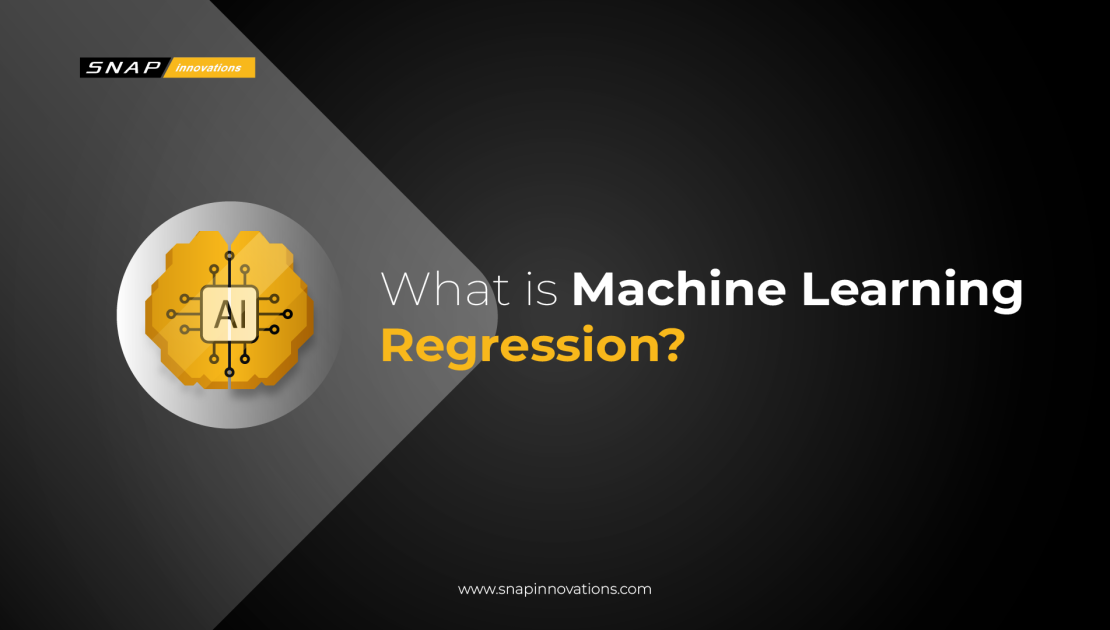In the realm of data science, machine learning stands as a ubiquitous force, empowering us to extract knowledge from vast troves of information. Among its diverse techniques, regression reigns supreme, providing a robust framework for predicting continuous numerical values. Whether it’s forecasting sales figures, anticipating customer behavior, or comprehending complex scientific phenomena, regression algorithms have revolutionized our ability to make informed decisions.
In the intricate landscape of machine learning, regression algorithms are akin to the skilled artists of the data world, delicately balancing precision and intuition. They come in various forms, such as linear regression, logistic regression, and polynomial regression, each tailored for specific scenarios and data characteristics. Linear regression, with its straightforward approach, is often the starting point for many, establishing a relationship between dependent and independent variables through a linear equation. On the other hand, logistic regression excels in binary classification tasks, transforming the linear regression model to estimate probabilities.
The evolution of machine learning has also brought more advanced regression techniques to the forefront, like ridge and lasso regression. These methods introduce regularization to combat overfitting, ensuring that the model’s predictions remain reliable and robust, even when dealing with complex, high-dimensional data sets. In essence, regression in machine learning is not just a tool; it’s a dynamic and evolving discipline that continually adapts and grows, reflecting the ever-changing landscape of data and technology. It’s a testament to human ingenuity in our quest to make sense of the world around us through numbers and algorithms.
What is Machine Learning Regression?
Machine learning regression is a supervised learning technique that delves into the intricate relationships between independent variables, also known as features, and a dependent variable, the target we seek to predict. It establishes a mathematical model that maps the input features to the desired output, enabling us to forecast future values with remarkable accuracy.
Imagine you’re a real estate agent tasked with predicting house prices. You gather data on various factors influencing the value, such as square footage, number of bedrooms, location, and amenities. Regression algorithms, armed with this information, can learn the underlying patterns and generate predictions for new houses.
This predictive power of machine learning regression extends far beyond real estate. In healthcare, regression models can predict patient outcomes based on symptoms and test results, offering invaluable assistance in diagnosis and treatment planning. In finance, they forecast stock prices and market trends, aiding investors in making informed decisions. Even in sports, regression helps in analyzing player performance and team strategies. The versatility of regression lies in its ability to model a wide range of phenomena, transforming raw data into meaningful insights across various domains. By continuously learning from new data, these models refine their predictions, becoming an essential tool in the arsenal of data-driven decision-making.
Also Read: What is Candlestick Trading?
Types of Regression Models
The world of regression encompasses a diverse array of models, each tailored to specific scenarios and data types. Let’s explore a few of the most prevalent:
1. Support Vector Regression (SVR)
SVR extends the concepts of support vector machines (SVMs) from classification to regression. It focuses on defining a margin of tolerance within which no penalty is given to errors, thus aiming to fit the best possible line within this margin. SVR is renowned for its robustness, especially in high-dimensional spaces, and is effective in scenarios where the relationship between variables is not only nonlinear but also complex and intricate.
2. Ridge Regression
Also known as Tikhonov regularization, Ridge regression addresses the issue of multicollinearity (high correlation among predictor variables) in linear regression by adding a degree of bias to the regression estimates. It incorporates a regularization parameter that helps in reducing model complexity and preventing overfitting, which is especially useful when dealing with data where multiple regression variables are strongly correlated.
3. Lasso Regression
The Least Absolute Shrinkage and Selection Operator (Lasso) regression is similar to ridge regression but uses absolute values in the penalty function, which leads to different results. Lasso regression not only helps in reducing overfitting but can also perform feature selection by shrinking coefficients of less important features to exactly zero. This makes it particularly useful in model selection and improving model interpretability.
4. Elastic Net Regression
This model combines the properties of both ridge and lasso regression. It uses a mix of L1 and L2 regularization methods, allowing it to inherit the benefits of both: the ability to handle multicollinearity from ridge and feature selection capabilities from lasso. Elastic Net is particularly effective when there are numerous correlated features, as it blends feature elimination from lasso and feature shrinkage from ridge.
5. Quantile Regression
Quantile regression differs from the traditional mean regression models by estimating the median or other quantiles of the dependent variable. This approach is especially beneficial when the relationship between variables differs across different parts of the distribution or in the presence of outliers, as it provides a more complete view of the possible conditional distribution of the dependent variable.
Applications of Machine Learning Regression
 The applications of regression extend far beyond real estate, permeating diverse industries and domains:
The applications of regression extend far beyond real estate, permeating diverse industries and domains:
1. Finance
In finance, regression models are indispensable tools. They are used extensively for predicting stock prices, where historical data on stock performance, economic indicators, and market sentiments are analyzed to forecast future prices. This information assists investors in making informed decisions about buying, selling, or holding stocks.
Additionally, regression is applied in credit scoring models to assess the creditworthiness of individuals. By examining factors such as income, credit history, and current debts, these models predict the likelihood of default, aiding financial institutions in decision-making processes. Moreover, regression models play a critical role in forecasting economic trends like inflation rates, GDP growth, and unemployment rates, helping policymakers and economists in strategic planning and policy formulation.
2. Marketing
In the realm of marketing, regression analysis is key to optimizing advertising campaigns. By correlating various advertising mediums and strategies with sales data, businesses can identify the most effective channels and methods for their marketing efforts. Predicting customer behavior is another crucial application. Understanding factors that influence consumer choices, such as demographics, past purchase history, and marketing stimuli, enables companies to tailor their offerings and improve customer engagement. Additionally, regression models are used to understand market dynamics, like price elasticity and demand forecasting, which are vital for strategic pricing and inventory management.
3. Healthcare
In healthcare, regression models are widely used for diagnosing diseases. They analyze patient data, including symptoms, lab test results, and medical histories, to predict the likelihood of various health conditions. This aids in early diagnosis and timely intervention. Predicting patient outcomes is another critical application. For instance, regression models can predict the likelihood of readmission for patients with chronic illnesses, helping hospitals in resource planning and patient management. Furthermore, these models are instrumental in developing personalized treatment plans. By understanding how different patients respond to treatments, healthcare providers can tailor therapies to individual needs, improving outcomes.
4. Science and Engineering
In the fields of science and engineering, regression models are used to model physical phenomena, such as predicting weather patterns or understanding the behavior of materials under stress. Environmental scientists use regression to predict changes in climate patterns, like temperature shifts or rainfall trends, which are essential for planning and conservation efforts. In engineering, regression is applied to optimize resource utilization, such as energy consumption in manufacturing processes or optimizing routes for logistics and transportation, leading to increased efficiency and reduced costs.
5. Social Sciences
In social sciences, regression analysis is crucial for analyzing social trends. It helps in understanding patterns and changes in society, like shifts in public opinion or demographic changes. Predicting election outcomes is another area where regression models are extensively used. By analyzing data from polls, demographic information, and past election results, these models can provide insights into voter behavior and potential election outcomes. Understanding human behavior, such as consumer habits or societal responses to policy changes, is also facilitated by regression analysis, providing valuable insights for policymakers, businesses, and researchers.
Benefits of Machine Learning Regression
 Regression algorithms offer a plethora of benefits, making them indispensable tools in the data scientist’s arsenal:
Regression algorithms offer a plethora of benefits, making them indispensable tools in the data scientist’s arsenal:
- Predictive Power: Regression models are renowned for their ability to forecast continuous numerical values with high accuracy. This predictive power is essential in various domains, from financial forecasting to healthcare prognosis. By analyzing historical data, these models learn patterns and trends, enabling them to make well-informed predictions about future events or trends. This capability not only aids in strategic decision-making but also helps in anticipating future scenarios, allowing businesses and organizations to plan and act proactively.
- Pattern Recognition: One of the key strengths of regression algorithms is their ability to discern underlying patterns and relationships within complex datasets. They analyze the interplay between different variables, uncovering insights that might not be apparent at first glance. This aspect is particularly valuable in fields like marketing and social sciences, where understanding nuanced relationships between variables can lead to more effective strategies and policies. For instance, identifying the factors that influence consumer behavior or voter preferences can provide a competitive edge in business or political campaigns.
- Generalization Ability: Effective training of regression models equips them with the ability to generalize well to new, unseen data. This means that once a model is trained on a particular dataset, it can apply its learned knowledge to make accurate predictions in different but related scenarios. This generalization is crucial for the model’s applicability in real-world situations, ensuring its usefulness beyond the specific conditions of the training data. It makes regression models versatile tools capable of adapting to a variety of contexts and applications.
- Interpretability: The interpretability of many regression models, especially linear and logistic regression, is a significant advantage. These models provide clear insights into how different variables affect the target outcome, allowing users to understand the factors driving the predictions. This transparency is essential in many fields, particularly in areas like healthcare or policy-making, where understanding the rationale behind a prediction is as important as the prediction itself. It also aids in trust and acceptance of the model’s results among stakeholders.
- Scalability: Regression algorithms are generally computationally efficient, which makes them scalable to large datasets and adaptable to real-time applications. This scalability is critical in today’s data-driven world, where the volume of data being generated is enormous and continually growing. The ability to process and analyze large datasets efficiently allows for more comprehensive and accurate modeling, enhancing the overall utility of regression algorithms in various large-scale applications.
Challenges of Machine Learning Regression
 Despite their immense value, regression algorithms also present certain challenges:
Despite their immense value, regression algorithms also present certain challenges:
Regression algorithms, while powerful, are not without their challenges. One of the primary challenges is the quality of data used for training these models. In machine learning, the adage “garbage in, garbage out” holds particularly true. The performance of regression models heavily depends on the quality, completeness, and cleanliness of the input data. Noisy, incomplete, or biased data sets can lead to models that are inaccurate and unreliable. This challenge necessitates rigorous data preprocessing, including cleaning, normalization, and dealing with missing values, to ensure that the data feeding into the model is of high quality and relevant to the problem at hand.
Read More: How to Start a Hedge Fund? A Comprehensive Guide
Another significant challenge in regression modeling is feature engineering. The process of selecting the right features (variables) and preparing them for use in a model is critical. Features must be relevant to the task and appropriately represent the underlying problem. Including irrelevant or redundant features can lead to a decrease in model performance and increased computational complexity. Additionally, the transformation and scaling of features play a vital role in how well a model can learn. This stage requires a deep understanding of both the data and the model being used, and often involves a considerable amount of trial and error to identify the most effective feature set.
Overfitting is a common pitfall in regression modeling. It occurs when a model is too complex and learns the noise and fluctuations in the training data to an extent that it negatively impacts the model’s ability to generalize to new data. This can lead to models that perform well on training data but poorly on unseen data. Regularization techniques, such as those used in ridge and lasso regression, can help mitigate overfitting by penalizing overly complex models. Furthermore, selecting the right model for a specific task is crucial. Not all regression models are suitable for all types of data or problems. It often requires extensive experimentation and evaluation to identify the model that best suits the data and the specific nuances of the problem being addressed. This process can be time-consuming and resource-intensive but is essential for developing effective and robust regression models.
Conclusion
Machine learning regression has emerged as a transformative force in data science, empowering us to harness the power of predictive modeling. Its diverse applications, ranging from finance and marketing to healthcare and scientific research, underscore its profound impact on our world. As we continue to explore the frontiers of machine learning, regression algorithms will undoubtedly remain at the forefront of data-driven discovery and decision-making.

